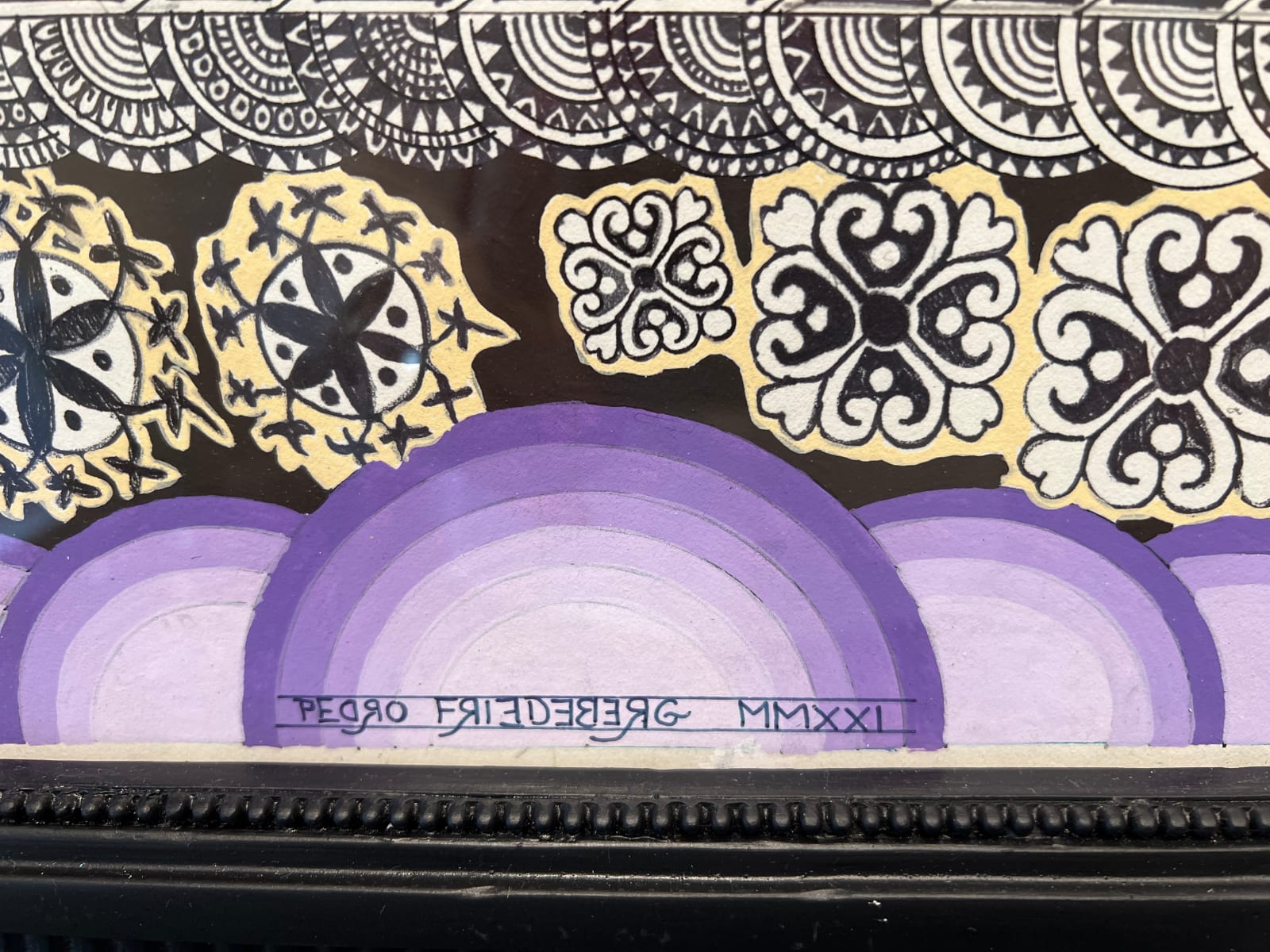-






Pedro Friedeberg Mexican, b. 1936
No hay mal que bien no venga. ¡Recórcholis, Cáspita, Cielos!, 2021Ink and acrylic on museum board41 x 61 in
104.1 x 154.9 cmFurther images
The artwork employs color and shape to create a contrast between its left and right sides, such as warm, bright colors versus cool, dark ones. Half of the frame is...The artwork employs color and shape to create a contrast between its left and right sides, such as warm, bright colors versus cool, dark ones. Half of the frame is painted black, while the other half is gilded, symbolizing the duality of life. The piece features recurring motifs from the artist, including Ancient Greek designs, Vishnu deities, mandalas, and Buddhas.
On the left side of the painting, two Hindu deities, likely Vishnu, hold in their four hands the shankha (conch), chakra (discus), gada (club), or padma (lotus). Multiple conch shells symbolize spiritual connection, creation, and purification in many traditions, representing divine energy and the primordial sound of creation (Om). They are used in rituals to summon spirits, mark new beginnings, and serve as symbols of authority and protection. The right side of the painting features six Buddhas arranged in ascending order from bottom to top. The middle portion displays two full mandalas, which are symbolic circular designs originating from Hindu and Buddhist traditions, meaning "circle" in Sanskrit. Mandala represents the cosmos. Traditionally, a complex, sacred diagram used in rituals, mandalas are now also popular art forms, often used in secular contexts to promote mindfulness, creativity, and calm due to their repetitive patterns and symmetrical structure. The use of the mandala can be seen as transcending religious boundaries.
The work showcases his characteristic use of geometric designs, perspective, and color, resulting in a cohesive and visually pleasing composition.
The title, "No hay mal que por bien no venga," translates to “Every cloud has a silver lining.”Literature
“Views from Mexico: A 20th-Century Panorama,” Meer, September 1, 2025. (illustrated)












